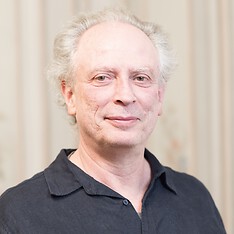Andreas Sandri
Lecturer for Alexandertechnique
sandri@mdw.ac.at
 *born in Zurich, Switzerland, since 1985 in Vienna.
*born in Zurich, Switzerland, since 1985 in Vienna.
*Teacher training at the Constructive Teaching Centre in London, 1991 - 1994 with Walter Carrington.
*1995 working as a teacher in Vienna, at the isa - International Summer Academy, Tiroler Landestheater and Tanzsommer Innsbruck.
*From 1996 teaching Alexander Technique at the University of Music and Performing Arts Graz and since 2016 at the *University of Music and Performing Arts Vienna.
*2012 start of the Wiener Ausbildungszentrum für Alexandertechnik Wien.
The Alexander Technique is a method of self-help. Its purpose is to help people to avoid doing things that are harmful to their general wellbeing. The method is unique because, unlike most systems that advise people what to do or how to do it, this teaches what not to do and how to prevent it. Thus the Technique requires, first of all, a practical demonstration, conveying the experience of what actions are wrong; and then clear instruction as to how they can be avoided.
The Technique originated as long ago as 1894 from the experiences gained by F. Matthias Alexander concerning his use of voice, as an actor and performer of dramatic recitations. He had no scientific training in anatomy and physiology, but observation and experiment led him to acquire knowledge so that he was able to overcome the problems of speech and respiration that had beset him. When certain eminent scientists subsequently experienced his work for themselves, they asserted that it satisfied all the criteria of scientific method.
On the one hand the concept of "not-to-do", of "thou shalt not", can evoke negative emotional responses which confuse the issue. People prefer to be advised what to do. They look for positive instruction. On the other hand, the scientific significance of what Alexander observed as he stood in front of a looking-glass can scarcely be appreciated by a reader without some technical knowledge of balance, movement and posture.
He established empirically that in posture and movement his neck must not be stiffened, but that his head should be allowed to adopt a certain preferred attitude in relation to his neck and body (described by him as "head-forward-and-up") and that this was consistent with a free, alert attitude or state of poise. by Walter Carrington.
